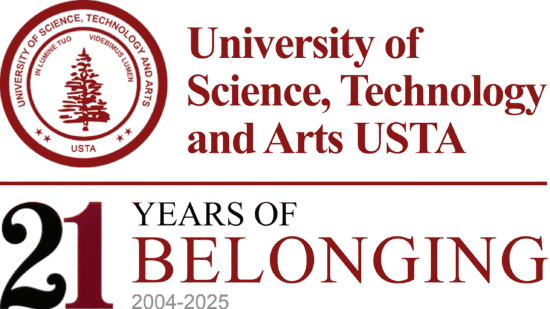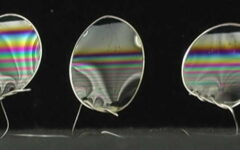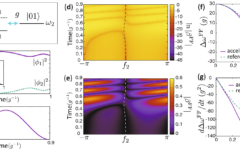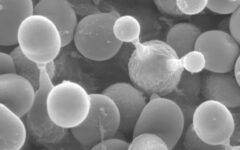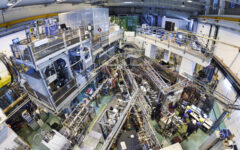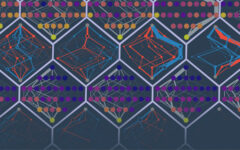Synchrotron sheds (X-ray) light on carbon chemistry at ocean surfaces
16 August 2023 2023-08-21 10:46Synchrotron sheds (X-ray) light on carbon chemistry at ocean surfaces
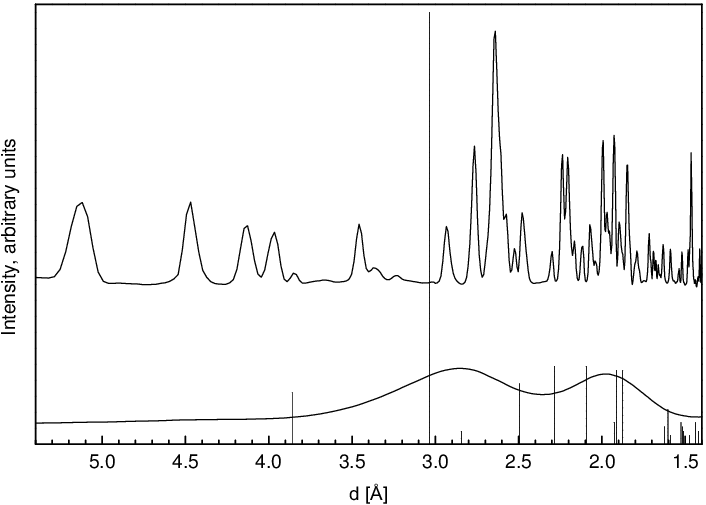
Synchrotron sheds (X-ray) light on carbon chemistry at ocean surfaces
Breakthrough discoveries on the Earth’s carbonate system with far ranging applications, including carbon sequestration and biology
Source: American Institute of Physics Summary: Carbonate, bicarbonate, and carbonic acid emerge when atmospheric carbon dioxide dissolves in the oceans, which is the largest sink for this greenhouse gas. Researchers are interested in better understanding the carbonate system to potentially help facilitate carbon sequestration schemes, to help mitigate climate change. Recently, researchers made breakthrough discoveries about the carbonate species’ behavior at saltwater surfaces, like that of the ocean.
Nature’s carbonate system, the dynamic chemistry involving carbon dioxide (CO2), carbonate (CO32-), bicarbonate (HCO3-), and carbonic acid (H2CO3), is a vital component of the biosphere. Carbonate, bicarbonate, and carbonic acid emerge when atmospheric carbon dioxide dissolves in the oceans, which is the largest sink for this greenhouse gas. Researchers are interested in better understanding the carbonate system to potentially help facilitate carbon sequestration schemes, especially with carbon-bonding minerals, to help mitigate climate change. The carbonate system is also central to biological respiration systems, another reason why researchers are interested in this chemistry.
Recently, a group of chemists from the University of California, Berkeley teamed up with scientists at Lawrence Berkeley National Laboratory (LBNL) and made breakthrough discoveries about the carbonate species’ behavior at saltwater surfaces, like that of the ocean. They report their findings this week in The Journal of Chemical Physics, from AIP Publishing.
According to one of the paper’s authors, UC Berkeley chemistry professor Richard Saykally, a strong motivation for this research was understanding the chemical processes involved in carbon sequestration. They found that while neutral carbonic acid was most heavily present at the surface, as was expected, the more highly charged carbonate ion was more abundant than the weaker bicarbonate.
“We want to generally advance our understanding of the global carbon cycle,” Saykally said. “The aspects of this cycle that we have been focusing on begin with carbon dioxide in the atmosphere dissolving into salt water, followed by some very interesting chemistry.”
Carbon dioxide is captured by the water surface and hydrated to form carbonic acid or bicarbonate, which can then ionize into either bicarbonate or carbonate where carbonate may react with dissolved magnesium or calcium ions to form limestone.
“We want to know all those steps going from gaseous carbon dioxide in the atmosphere to limestone,” Saykally said. “Our goal is to understand all the details in all the steps in that process.”
UC Berkeley chemistry doctoral candidate Royce Lam, a co-author of the paper who led much of the research, wanted to build on earlier examinations of the hydration structure of carbonic system species, focusing on the relative abundances of carbonate species at the liquid surface.
Collaborating with LBNL’s Dr. Hendrik Bluhm, Lam and co-authors made use of the ambient pressure photoemission spectroscopy (APPES) beamline (11.0.2) at the Advanced Light Source synchrotron at LBNL, to conduct X-ray photoemission spectroscopy (XPS) measurements — a way to probe the molecular makeup of materials using an intense beam of high-energy X-rays. The XPS system enabled them to probe different aspects of the carbonate system they could not access before.
“What is special about XPS is that it allows us to probe at different depths into the water surface,” Lam said. “This is one of the few beamlines in the world that can do this class of experiments on liquids.”
For samples, Lam combined solutions of the carbonate species and hydrochloric acid, which fortuitously resembled the ocean system. With a liquid microjet device, the researchers injected these samples into a vacuum chamber and probed them at multiple X-ray energies to deduce the relative abundances of the carbonate species from the photoemitted electrons.
At the liquid surface, both carbonate and carbonic acid were more abundant than biocarbonate. The most significant surprise was that the more highly charged carbonate was more abundant at the surface than the less charged bicarbonate, which conflicts with expectations from existing theoretical models.
This raises important question about where the bicarbonate could be moving in the system, with a possibility that the carbonate could be “ion pairing” with sodium, changing the chemistry, and causing bicarbonate to move to lower depths.
“We are still working on the theory and we hope that this paper will stimulate further theoretical discussion that may actually yield definitive insights about what is going on here,” Lam said.
Lam hopes that this research will also lead to more direct research on carbon sequestration possibilities.
“So, the next step would be to look further into ion pairing, and essentially limestone or mineral formation, specifically, looking at the interaction of calcium and magnesium ions with carbonate,” Lam said of one carbon sequestration possibility he discussed.
Saykally feels this research connects with the whole system of aqueous carbonate chemistry, with applications ranging from carbon sequestration to biomedical research.
“In order to achieve these kinds of advances, I believe you have to know every detail of the chemistry involved in all those steps of the water-carbonate system.” Saykally said. “It is a very intricate chemistry with profound practical implications.”
